Table of Contents
What is Gable Roof?
It is a type of roof that consists of two sections joined at their upper horizontal edges to create a ridge.
In colder or more temperate climes, rafters, roof trusses, or purlins are used to make the most typical roof shape. A gable roof’s pitch can change significantly.
The often triangular area of a wall that is between the borders of crossed roof pitches is known as a gable.
The structural system employed which considers the environment, the availability of materials, and aesthetic considerations determines the gable’s shape and level of detail.
The whole wall, together with the gable and the wall below it, is frequently referred to as a “gable wall” or “gable end.”
Gable vents are absent from some roofs (for example, hip roofs do not have them). The gable roof, a typical gabled roof style, gets its name from its prominent gables.
Two or more gable rooflines that cross one another at an angle make form a cross-gable roof; normally, the two ridges are positioned perpendicularly.
It is also known as the A-shaped wall segment that connects the two sloping sides.
It is crucial to note that these sides can vary in size depending on the site, and larger residential structures occasionally feature two or more gables to add extra depth and structure.
A Gable Roofing History
Gable roofs have existed since the early days of the ancient Greeks when they were applied to temples.
Since then, northern Europe and America have come to rely heavily on its gabled roofs as a design element.
A front-gabled building has its gable facing the street. A side-gabled building, on the other hand, has its cullis, or gutter, facing the road, and its ridge running parallel to it.
Front-gabled structures dominated German city streets in the medieval Gothic era. From the 14th to the 17th century, the Renaissance saw a rise in the popularity of side-gabled buildings, which were influenced by Italian design.
Front-gabled homes grew in popularity in America from the early 19th century and 1920.
Design of Gable Roof
Two portions of a gabled roof slope downward on either side of the ridge. These are arranged so that the top point, or roof ridge, is formed by converging the tallest horizontal edges.
Depending on the land’s size, the gutters’ pitch and height in a gable roof design can change.
A ridge board is parallel to the exterior walls and lengthens along the roof’s peak, its highest point.
The tops of the common rafters are fastened to the ridge board. These rafters slant downward and are attached to the exterior walls and ceiling joists.
Components of a Gable Roof
The gable roof concept may be straightforward but consists of several different parts. How would the house seem if the roof were taken off? In essence, isn’t it a long, triangular prism? The roof construction has three essential parts.
The roof has two sides that slope at an angle. Roof pitch is a term used in architecture. Along a central ridge that runs perpendicular to the length of the building, these pitched (sloped) sides converge.
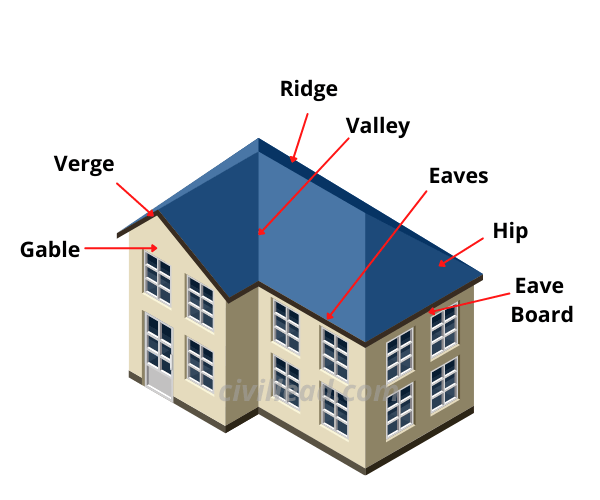
What’s left, then? What about that vertical, triangular portion of the wall that was visible in between the angled ends of the pitched sides?
The wall portion that runs from the base of the eaves to the ridge top is known as the gables. The name of this type of roof is derived from the gables.
The roofs on the houses your kid’s draw have gable ends. It has two sides that slope downward and meet at a central point.
- Gable: The A-shaped side wall of a home’s structure known as the gable serves as the roof’s peak. The house in the picture above has a gable on each end.
- Eaves: The term “eaves” refers to the lower portions of a roof that extend over the exterior walls of a house.
- Rake: The term “rake” refers to the portion of the roof that extends over a gable end.
- Ridge: Your roof’s ridge is its highest point. It stands as the highest point on a sloped roof.
Types of Gable Roof
- Box Gable
- Front Gable
- Cross Gable
- Gable With Shed Roof
- Dutch Gable
Box Gable
A box gable roof has a triangular expansion at either end of the roof segment. This style closely resembles the typical roof gable; however, it emphasizes the triangle portion of the design.

Front Gables
The front door is often positioned beneath the front gable roof, simply at the front of the home. This characteristic of Colonial-style homes is common, although interest in the style is rising.
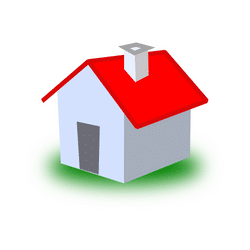
Cross Gable
Two or more gable rooflines that cross one another at an angle make form a cross-gable roof; normally, the two ridges are positioned perpendicularly.
Homes of this kind frequently have a more intricate design due to the altered shape that this type of roof will have on the structure of the house.
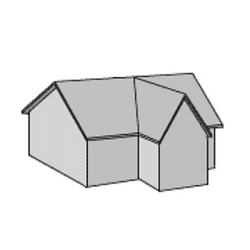
Homes with this type of roof extension, for instance, could include independent wings, an attached garage, or a big porch.
Gable With Shed Roof
Adding a shed roof to the ridge of a gable roof is a common step in expanding an existing roofing system.
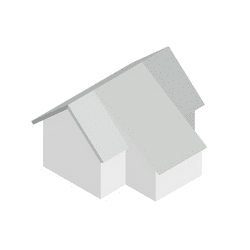
This hybrid style offers the chance for increased headroom and space without completely changing the roof’s structure and aesthetics, making it a popular option for property owners wishing to expand.
Dutch Gable
Hip and gable roofs are both present on Dutch gable roofs. The gable is typically located on the hip roof in these roofs, giving the loft more excellent room.
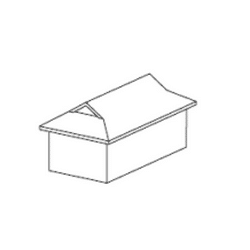
Many homeowners favor this style since it gives a home a more appealing aesthetic appeal while also serving the valuable purpose of additional room.
How Long Can the Roof Last?
The quality of the installation and the materials utilized will affect how long a roof lasts. A well-built roof can often last 40 years or even longer if it has a solid supporting structure.
Advantages
Water Drainage
A roof’s sloped form acts as a dependable water drainage system. Water and snow can readily roll down the top due to the tilted pitch.
This roof feature reduces the possibility of leaks, ensuring that the top can last longer without damage.
Easy to Construct
Roofs may be made quickly and easily. Compared to other roof options, these roofs need simple construction techniques.
Additional Room
The homeowner has additional room thanks to the triangular or sloped roofing system. Extra attic space and better ventilation in homes are advantages for homeowners.
A Reasonable Choice
A roofing system is a cost-effective solution for people with limited resources. The overall cost of building and installing roofs is lower since gabled roofs are significantly more straightforward to construct than other intricate roofing solutions.
Materials
When building a roof, many different materials can be used. Metal sheets, clay tiles, and concrete tiles can be used to build the shelters and complete the home, depending on the needs.
Disadvantages of
Possibility of wind damage.
Gable roofs are not the best choice for hurricane-prone areas. Since the roof design has a higher pitch than other roof types, it is more vulnerable to wind damage.
A wind trap can easily be made in the upper portion of the roof. Strong gusts may apply significant pressure to the roof, leading to the top peeling off.
Right Installation
A professional should do it even if gable roof installation is not too difficult. A sturdy gabled roof can last a very long time if erected using suitable materials and adequately supported by the framing. The roof risks collapsing if the structure is not placed appropriately.
Cracking
It’s essential to recognize that the roof is always exposed to light and the elements. The roof requires maintenance because it is prone to cracking over time. Employ heat-resistant and watertight layers to maintain the roof.
The price of building a gable roof
The average construction cost is between $8 and $16 per square foot. The typical price ranges from $8,000 to $16,000 for a roof covering 1000 square feet. Adding more gables and dormers may increase the cost.
FAQs
What is a gable roof?
A triangular section of the roof wall near the tip of a ridged roof is known as a gable. Typically, a gabled roof has two slopes that run from the ridge to the top edges.
What exactly is a gable roof?
The two slopes of a gabled roof typically begin at the ridge and extend to the ends of the roof. When two sloping sides come together, end walls with a triangular extension known as the gable.
What Exactly Is a Hip Roof?
Hip roofs have no vertical ends and slope downward from every side of the building. It is a point outside of a roof where the other sloping sides meet.
What distinguishes a hip roof from a gable roof?
The number of sloping sides significantly distinguishes a hip roof from a gable roof. All four roof sides of a hipped roof slope downhill over the house’s walls, and only two sides, or peaks, of a gable roofing system slope down toward your home.
Also, Read
What is a Pitched Roof? Types of Pitched Roof
25 Basic Components of Pitched Roof
Parapet Wall – Purpose, Types & Uses
Standard Room Sizes & Their Location In A House